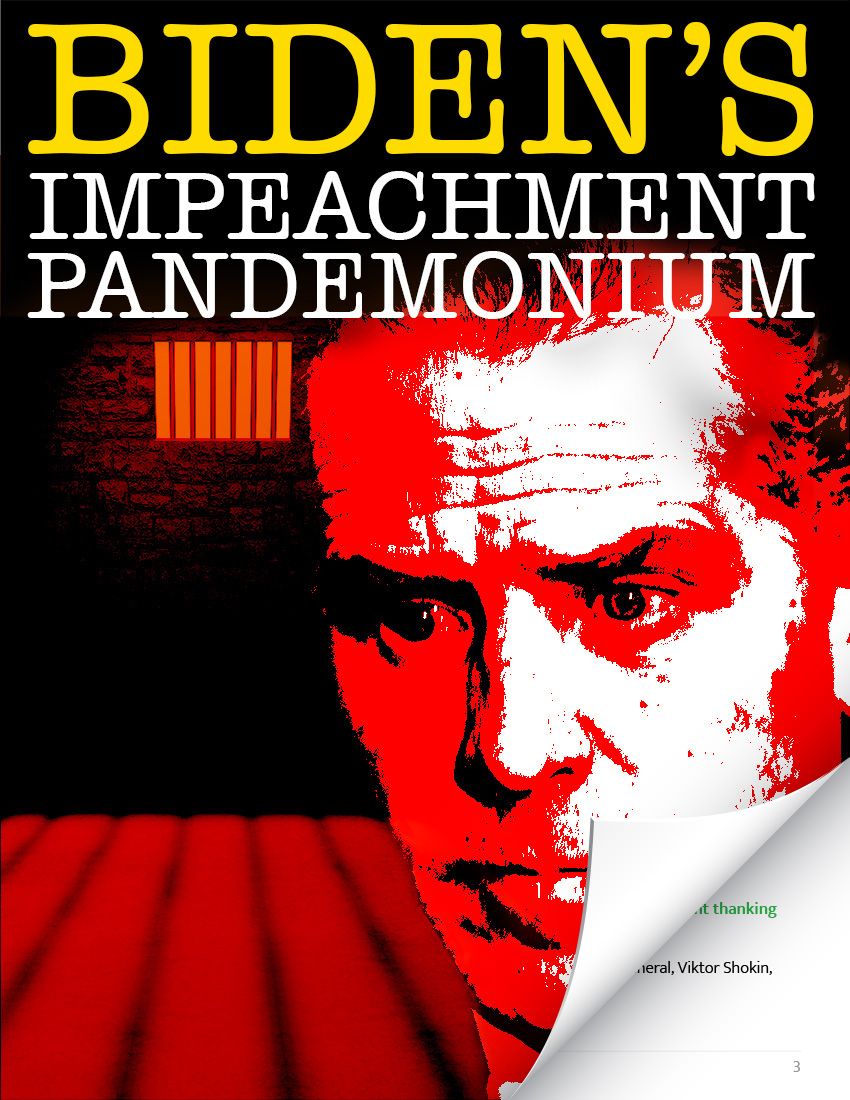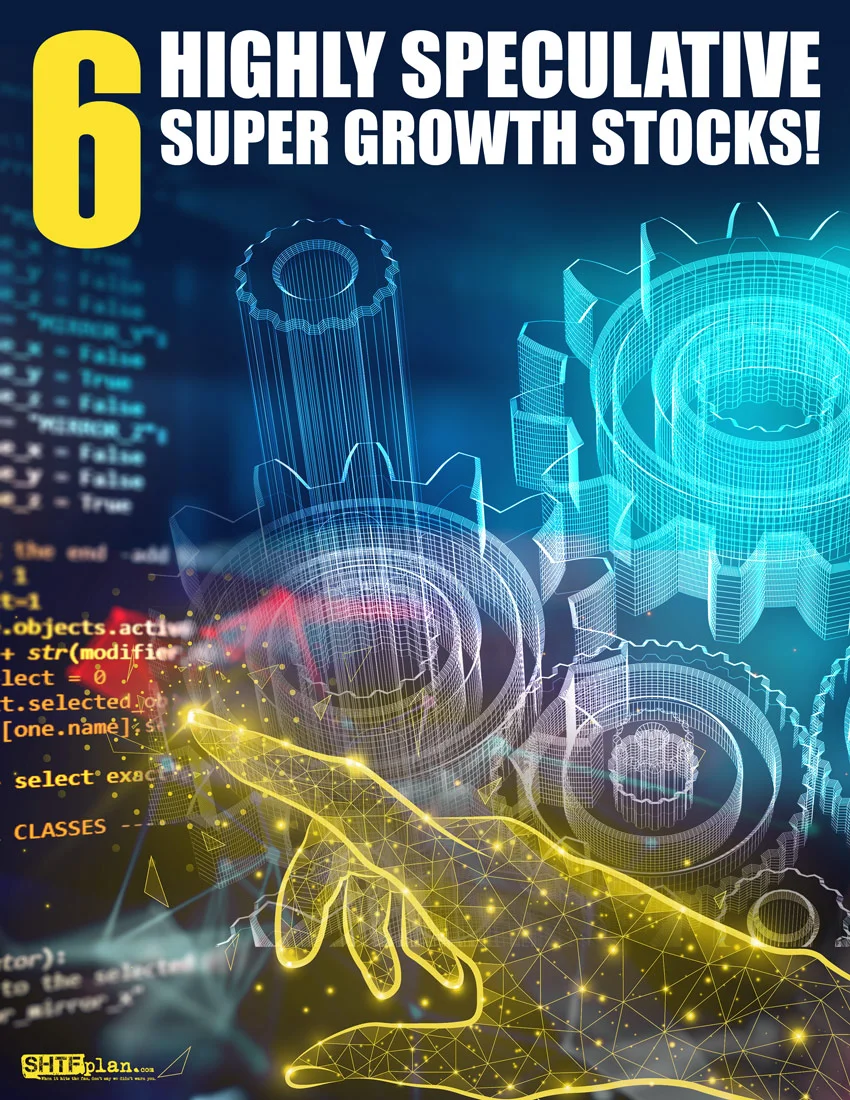
TRUMP SAYS: HUNTER MAKES FORTUNE FROM SHADY DEALS!
BIDEN FAMILY STINKS TO HIGH HEAVENS OF CORRUPTION!
DON'T GET LEFT OUT: HUNTER MUST BE STOPPED!

This article was originally published by Rhoda Wilson at The Daily Exposé.
The diversity, equity, and inclusion (“DEI”) regime has assumed a few names since the summer of 2020, among them: “woke” and “cancel culture.” But it can be more precisely referred to as “critical social justice.”
So, what exactly is critical social justice that so many in the Western world have been forcibly subjected to?
The following is the article ‘‘Counterweight’ to Conformity’ written by Habi Zhang and published by the American Institute for Economic Research (“AEIR”).
Over the past three years, Western societies have devoted immense resources to promoting and even mandating diversity, equity, and inclusion (“DEI”) initiatives and practices, such as anti-racist and unconscious bias training, in almost all spheres of society. Indeed, the DEI regime has become so all-encompassing and penetrating that ordinary people, ones whose life trajectories have no intersection with an academic activist culture or parts of the internet soaked in a cultural war, find their livelihoods are nonetheless entangled, frankly, saddled with, or even jeopardized by a variety of DEI policies, programs and the discourse itself.
So, what exactly is DEI, that over half of workers in the US receive its training at work? What exactly is DEI that companies, universities, and government can require a written commitment to its principles? Isn’t DEI just another name for the commonsensical opposition to discrimination against people on the grounds of their race, sex, sexuality, or any number of immutable attributes? The answer is no.
As Helen Pluckrose writes in her 2024 book ‘The Counterweight Handbook: Principled Strategies for Surviving and Defeating Critical Social Justice—at Work, in Schools, and Beyond’, the DEI regime is “inextricably connected with an illiberal, authoritarian ideology,” which has assumed a few names since the summer of 2020, among them: “woke” and “cancel culture.” But, Pluckrose summarises, it can be more precisely referred to as “critical social justice,” which she understands as a particular “approach to social justice activism.”
Two pillars of the CSJ theory readily manifest themselves to people familiar with neo-Marxism and postmodernism. One is hegemony, invisible systems of oppressive power into which everyone has been socialized, and the other is discourse, which serves hegemonies claimed to be prevailing in Western societies, such as “whiteness,” “patriarchy,” “colonialism,” “heteronormativity,” “cisnormativity,” “transphobia,” “ableism,” “fatphobia,” so on. The third pillar of this ethical framework is a sort of identity or group politics that charts this so-called invisible power structure not based on socioeconomic status but on some nebulous and superficial conceptualizations of race, gender, and sexuality.
Pluckrose points out to her readers that CSJ theory interprets social justice, commonly understood as a principle advocating fairness and equality for all, in a profoundly different way – it is a “critical approach,” referring to a distinctive standpoint ingrained in identity-based power dynamics. As the term’s authors Ozlem Sensoy and Robin DiAngelo explain, this theoretical perspective “recognizes that society is stratified (i.e., divided and unequal) in significant and far-reaching ways along social group lines that include race, class, gender, sexuality, and ability.”
The buzzword “critical,” thus construed, the spirit of which is epitomized in overblown academic jargon such as “critical learner,” “critical pedagogy,” and “critical scholarship,” bears no resemblance to the commonsensical understanding of the concept of “critical thinking” as the evaluation of truth claims on the grounds of reasoning and evidence, but refers to the scrutiny of prejudices and discriminations assumed to have woven into the social fabric, policing the use of language that perpetuated oppressive attitudes, beliefs and narratives, and ultimately dismantling the imbalanced power structures. To be “critical” (or “woke”) is, therefore, to cast an indictment at alleged social injustices with blind conviction and to be obliged to awaken others to the invisible power structures. Indeed, to quote the CSJ theorist Alison Bailey, “a critical learner is someone who is empowered and motivated to seek justice and emancipation.”
It should be patently clear to even casual observers that what those CSJ assumptions and declarations constitute is a doctrine that is, in Pluckrose’s apt words, “dogmatic,” “authoritarian” and “cynical.” May I add that the CSJ dogma is also blatantly anti-intellectual and manipulative? How could it not be, when critical researchers claim that Critical Scholarship is “not out to create truth” but “an active identification of and engagement with power,” and critical pedagogy does not regard claims students make as “propositions to be assessed for their truth value, but as expressions of power that function to re-inscribe and perpetuate social inequalities”?
Pluckrose and her co-author James Lindsay, in their 2020 best-seller book Cynical Theories, chronicled how CSJ started as a fringe faction in academia but quickly evolved into a significant cultural force in mainstream society in 2015 and finally ignited a “dogmatic and authoritarian ideological movement” in the late spring of 2020 against a period of lockdown, an ambiance of fear over a virus and a black man’s death.
Following a summer of mass protests that convulsed much of the Anglosphere and parts of Europe, CSJ was mainlined into the most important institutions: corporations, schools, nonprofits, media, entertainment, sports, political parties, and lastly, government. As if overnight, politicians, celebrities, businesses, and civil and even religious communities knelt before CSJ, pledging their allegiance to its tenets.
In her latest book, The Counterweight Handbook, Pluckrose summarised ten of its core tenets. To name a few:
Predictably, not everyone would concur with those simplistic, divisive, and acrimonious worldviews that are questionable at least and preposterous at worst. Since the publication of her 2020 bestseller, Pluckrose has received hundreds of emails daily from people from all walks of life who are certainly non-believers but are subjected to mandatory DEI training or re-education programs and bullied to affirm CSJ claims such as
Ordinary people engulfed in this “dogmatic and authoritarian ideological movement” – one led not by grassroots organizations but, mysteriously, by bureaucracy in corporations, schools, and, most perplexingly, liberal democratic governments – reached out to Pluckrose, seeking help to escape those counterproductive, stifling, erosive, toxic and frankly racistCSJ practices.
Pluckrose’s book does a good job explaining why the foundational premises of CSJ theory are religion-like scriptures that are unproven and also unprovable. Once the inner (il)logic of that seemingly esoteric but in effect pontifical theory is exposed, quickly peels away a thin veneer of high-flown aura of those CSJ scholar-activists, revealing themselves to be nothing more than mere sub-par sophists. The book also contains smart ideas on how to refute that overbearing sophistry on its own terms and using its own language should one find oneself in need of voicing dissent when asked to commit to a cult that one does not believe.
Not only is this book an accessible guide to understanding the “once insurgent but increasingly entrenched ideology” that has inflicted upon society a culture of alienation, fear, resentment, revenge, hostility and polarisation, but this Handbook, as its name suggests, also offers practical tools for action to “concerned individuals,” that is, the “employee, volunteer, student, parent or even employer,” who wish to survive or defeat the imposition of CSJ program, policy, or protocol at their workplace or classroom.
The Handbook provides a wealth of resources. The uninitiated can avail themselves of a “color-coded system” for determining whether this ideology is adopted in their organizations. For example, when receiving notification of a new policy that uses the language of “diversity, equity, and inclusion,” Pluckrose suggests one seek more detailed information, rather than rushing to a reactionary mode. One should ask for clarification on the definition of, for example, the concept of “diversity” – does it mean, as ordinary people would assume, “accepting and appreciating differences in a pluralistic fashion”? Or does it mean, as CSJ understands it, “seeking to privilege those seen as marginalized and marginalize those seen as privileged while enforcing conformity of opinion”?
People who wish to oppose CSJ initiatives or narratives can resort to five custom-made approaches, depending on institutional circumstances and personal skill sets. When one’s concern is met with outright rejection or radio silence by box-ticking bureaucrats or ideological conformity by overzealous co-workers, various ways to troubleshoot those challenges are on hand. Also available are suggestions for networking with other skeptics, forming communities of resistance, and initiating grassroots movements.
Overall, the Handbook seeks to assist people with informed, principled and firm but also prudent and diplomatic strategies that are ready-made and adaptable for addressing Critical Social Justice problems.

It Took 22 Years to Get to This Point
This article was originally published by William L. Anderson at The Mises Institute. Sen. Tommy...
A hospital in the central Russian city of Engels has sustained damage during the largest-ever...
French Member of the European Parliament Raphael Glucksmann has recently asked that the United...
Commenting Policy:
Some comments on this web site are automatically moderated through our Spam protection systems. Please be patient if your comment isn’t immediately available. We’re not trying to censor you, the system just wants to make sure you’re not a robot posting random spam.
This website thrives because of its community. While we support lively debates and understand that people get excited, frustrated or angry at times, we ask that the conversation remain civil. Racism, to include any religious affiliation, will not be tolerated on this site, including the disparagement of people in the comments section.


Comments